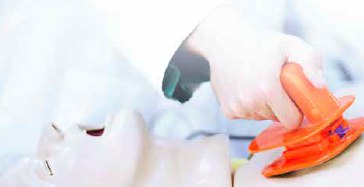
The Step Ahead in Surgical Training
As simulation-based training evidently imparts critical care and management skills better than problem-based learning, our centre has developed the Cardiothoracic Intensive Care Crisis and Emergency Management (CICCEM) programme for training surgical teams. Ms. Oon Siow Eng gives her insights on it.
Patient Safety Comes First
Most patients in the Cardiothoracic Intensive Care Unit (CTICU) have undergone open-heart surgeries. They will be closely monitored during the critical immediate post-operative period, when nurses and doctors play a crucial part in recognising any abnormalities. This is a highly stressful environment with patients who are potentially experiencing post-operative complications that may be life-threatening. Thus, patient safety is paramount and is our day-to-day challenge. The use of high-fidelity simulation (HFS), along with realistic scenarios and effective debriefing sessions, is a promising educational tool in ICU.
Benefits to the Performance of CTICU Teams
The CICCEM programme was formed in 2013 to establish the impact of HFS on improving technical competencies (theoretical knowledge and procedural skills) and non-technical skills (teamwork, leadership and communication) of the CTICU team in managing crises.
Simulation training opens up their minds to new possibilities, broadens their understanding of medical procedures and offers them a reliable option to practise new technologies and advance procedures without putting patients at risk.
Taking on a teaching and facilitating role, I am actively involved in this programme, which was spearheaded by Dr. Ramanathan K.R., Consultant, CTICU, and Pauline Oh Seok Lee, Senior Nurse Manager. With their strong support and guidance, we conducted the simulation fortnightly.
Although it can be labour-intensive, learners’ feedback were positive, with marked improvement in inter-professional team management and teamwork during clinical crises. We have included more complex cases and involved other professional groups, such as operative theatre nurses, cardiac surgeons, perfusionists and respiratory therapists, and will continue to evolve to raise interprofessional learning so we can achieve the gold-standard in patient safety and medical teaching.
By Ms. Oon Siow Eng
